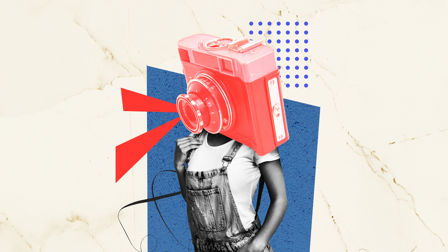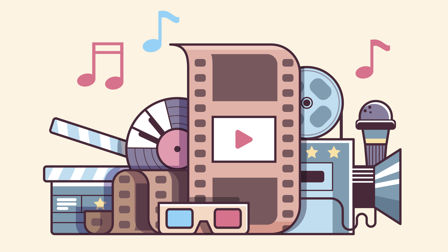Graham Fink Opens His Mind's Eye for Art
Ogilvy China's CCO, Graham Fink, creator of numerous award-winning advertising campaigns, has merged art and technology to produce a new way of creating portraits.
During his 25+ years in adland, Ogilvy China’s CCO Graham Fink has produced numerous lauded campaigns, like BA’s Face and the Cannes Grand Prix-winning Coke Hands. He’s also recorded a club hit, made a BAFTA-selected short, been D&AD’s youngest president and founded production company, The Finktank.
“I am working on a way to draw with my mind. I know how to do it but I just need more time to work on the logistics. I also have a day job that keeps me very busy.”
You wouldn’t think he’d be looking to achieve much more, but looking is what he does and in his second job, as multimedia artist/tech innovator, he has caught the art world’s eye by creating no-hands drawings powered just by his peepers. He tells Carol Cooper about his ocular oscillations

Above: Graham Fink
“Monet is only an eye,” Paul Cézanne once said of his chum, “but what an eye!” This reminds us that it’s not the dexterity of the artist’s hand as they wield brush, pencil or mouse, but the way they see that distinguishes a true artist. “When I was in drawing classes at art school,” recalls Fink, “the teachers would keep telling us to look, really look. I kept thinking: I am looking, but my arm and hand is the problem, it gets in the way. I thought a lot about this and how to draw in a purer way. Without the middle man, so to speak. Could I just draw with my eyes?”
Turns out he could and, collaborating with Swedish company Tobii Technology, he helped develop customised eye-tracking software that enables him to draw using solely the movement of his eyes. In March 2015, at London’s Riflemaker Gallery (which represents him) he gave the first of his Drawing With My Eyes displays – where visitors can watch him stare intently at a screen while drawings appear on it as if by magic.

Above: An eye-drawing Fink created of Stink founder, Daniel Bergmann
The windows of the soul
Since 1908, when Edmund Huey built the first rudimentary eye-tracker – a contact lens with a hole for the pupil – the science of recording eye motion and point of gaze has not only advanced apace but has found applications in marketing, psychology, human-computer interaction and product development.
Fink explains how his software works: “It records reflections of infra-red light shone into my eye and algorithms convert that information into a line on the computer screen, so wherever I look, the cursor moves too, thus drawing one long, continuous stroke. Once I start to draw, I have to keep going until I finish. So I can’t correct any mistakes.” Hmmm, I see –well, I don’t really see at all – but no matter, it’s what he sees that counts, and the inner visions of this highly innovative artist have found form in a variety of disciplines: photography, video and installations, as well as painting.

Above: Eye-drawing #2
The medium sounds like hard work; I wonder if he ever gets eye-strain, thinks “sod it” and reaches for a pencil. “When I first started to do this, the hardest part was learning how to control my eyes, because your eyes are making hundreds of tiny oscillations every second. It took me about three months of practice to get any good at it.” One of the hardest drawings was, ironically, Eye, which took 30 attempts. “Drawing my own eye with my eyes was a real challenge. I had to use a magnifying glass and a mirror and setting it all up was a nightmare.”
“It allows me to look directly at the subject and draw them. This builds up a very intense emotional connection between the sitter and myself."
He has two methods of drawing, either recording what he visualises in his mind’s eye, or drawing subjects from life. In the case of the latter, he rigged up a system that negated him having to look at the screen as he draws: “I built a wooden frame and mounted the eye tracker on that,” he explains. “It allows me to look directly at the subject and draw them. This builds up a very intense emotional connection between the sitter and myself, as we stare right into each other’s eyes. I am actually drawing blind. I can’t see the line as it’s developing on the screen. This is both exciting and disconcerting. I can’t make conscious decisions as to whether I need to enhance certain parts of the face or even if the drawing is working or not. It’s obviously very different to conventional drawing.”
The process of drawing his inner visions is equally unconventional and requires a curious blend of intense concentration along with letting go of the conscious mind. He has spoken about drawing “without the mind’s influence”. It is an extension of his fascination with exploring the subconscious and creativity.
"In advertising we spend most of our time trying to do things in a new way. I’m trying to draw portraits in a new way.”
This February his photographic exhibition Stone Souls explored his interest in pareidolia, the perception of a visual or auditory pattern where there is none. He describes it as “basically, seeing things like faces in clouds or the fire. So one method of drawing is (as Paul Klee would say) taking the line for a walk. With early portraits I’d just draw a line in a random way and wait for a face to eventually appear.”

Drawing with his eyes wide shut
Fink’s Stone Souls images depict faces emerging in random forms in nature, in decay, the paint peeling from a wall, and such like. He says he sees these faces or “ghosts” everywhere – in 1989 he found a sizeable, and pretty costly, face for Saatchi’s celebrated BA campaign.
As it’s usually the first thing a baby sees, the human face is lodged deep within the psyche. “Portraits are the most drawn or painted subject in art,” says Fink. “Now we have selfies too. In advertising we spend most of our time trying to do things in a new way. I’m trying to draw portraits in a new way.”
So what artistic boundaries will he be pushing next? “I am working on a way to draw with my mind. I know how to do it but I just need more time to work on the logistics. I also have a day job that keeps me very busy.”
Watch this space for news of Fink drawing with his eyes closed.
Connections
powered by
- Agency Ogilvy & Mather Shanghai
- Chief Creative Officer Graham Fink
Unlock this information and more with a Source membership.
)






 Membership
Membership


